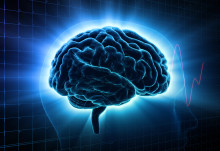

Imperial researcher Dr Diego Oyarzun, who was recently awarded a prestigious grant, explains how he uses maths to manipulate microorganisms.
Dr Oyarzún and his collaborator Dr Fuzhong Zhang from the Washington University in St Louis have won a Young Investigator Grant from the Human Frontier Science Program, worth $750,000 over three years. This scheme is extremely competitive, with just over thirty awards from more than a thousand submissions, and aims to fund high-risk research on the complex mechanisms of living organisms.
Dr Oyarzún, currently a Junior Research Fellow in Biomathematics in the Department of Mathematics, will use it to understand how microbes regulate their metabolism and survive in different environments. He chats to Hayley Dunning about how tinkering with tiny microorganisms could provide insights into antibiotic resistance or produce biofuels.
Your work involves the field of biomathematics. Can you explain what that is?
It’s trying to understand how biological systems work by using mathematical modelling, analysis and prediction. ‘Biological system’ is a very general term; you can talk about populations, or how humans and animals interact with each other, or how different species feed on each other, for example. You can zoom in to different scales of complexity, going all the way down to single cells or molecules and study how, for example, how microorganisms interact with each other and reproduce.
How did you get into it?
My original background is in control theory, a branch of electrical engineering, but I always liked biology and I was intrigued by the impact that theoretical approaches could have in answering important biological questions. That’s why I went for a PhD at the interface between maths, control theory and biology, and I have been in the field ever since.
What aspect do you work on?
I mostly study how networks of biochemical reactions function inside cells. I use maths to predict their responses to different stimuli, and determine how to modify them genetically to make them respond in new and useful ways, for example to produce biofuels or therapeutic drugs. This requires an integration of knowledge from mathematics, engineering and biology; we can carry out simulation and analysis of mathematical models to predict new cell behaviours that are not seen in nature, but that we can use for our purposes.
What is the new project about?
This new project is about regulation of bacterial metabolism. Bacteria need to take up nutrients from the environment and process it to extract energy, fuel their internal machinery, and assemble molecules needed for their survival.
Bacteria do not know when the environment is going to change, or whether you will give them food or not. They have feedback mechanisms that sense those environmental changes and decide which part of their metabolism should be on or off. When nutrient levels change, the feedback kicks in and re-adjusts the cell’s metabolism to accommodate the new scenario. In the project we will combine control theory and synthetic biology to understand how bacteria self-adapt and survive in different environments.
What do you hope to learn in the next stage?
We want to focus on two aspects of metabolic regulation – which molecules interact with each other and how strongly they do so. This is what we like to call the ‘architecture versus parameter’ problem. Although metabolic regulation is a well-known phenomenon, the intertwined roles of architecture and parameters have been rarely explored together because it is very hard to experimentally tease apart their individual contributions. But this is precisely what we will do: we will combine maths with genetic engineering to predict and probe the impact of architecture and parameters on metabolic adaptations.
What is the end goal?
We want to gain a systemic grasp of how microbes self-adapt their metabolism. From a basic science point of view, this is an important problem as, for example, some pathogens can rewire their own metabolism to resist antibiotics, while the onset of some diseases can be traced back to faulty regulation. It’s also important for biotechnology, because once we understand how metabolic regulation works, then we can think about how to tinker with it to make bacteria produce chemicals for human purposes.
Article text (excluding photos or graphics) available under an Attribution-NonCommercial-ShareAlike Creative Commons license.
Photos and graphics subject to third party copyright used with permission or © Imperial College London.
Reporter
Hayley Dunning
Communications Division

Contact details
Tel: +44 (0)20 7594 2412
Email: h.dunning@imperial.ac.uk
Show all stories by this author




Leave a comment
Your comment may be published, displaying your name as you provide it, unless you request otherwise. Your contact details will never be published.